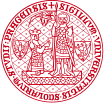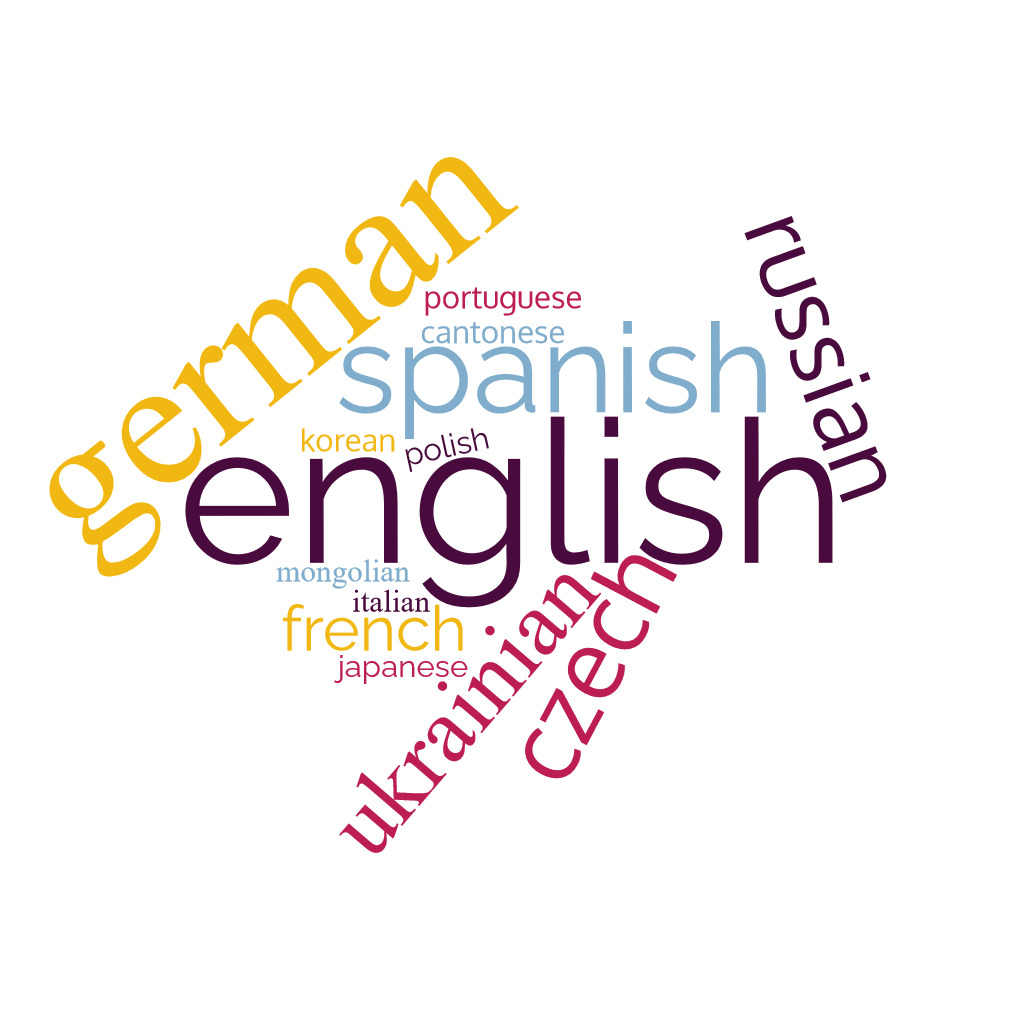


Institute of Formal and Applied Linguistics
Charles University, Czech Republic
Faculty of Mathematics and Physics
Variability of languages in time and space
Variabilita jazyků v čase a prostoru
SIS code: NPFL100 (the course's site in SIS)
Teachers: Magda Ševčíková, Anja Nedoluzhko, Zdeněk Žabokrtský
Fall term 2024/2025: Wednesday 15:40-17:10 in S8
Course completion requirements (homework assignments + final test):
- Homework assignments
- There will be 3 homework assignments.
-
For each assignment, you will get points, up to a given maximum (specified with each assignment).
- If your submission is especially good, you can get extra points (up to +10% of the maximum).
- All assignments will have a fixed deadline (usually in 10 days).
-
If you submit the assignment after the deadline, you will get:
- up to 50% of the maximum points if it is less than 2 weeks after the deadline;
- 0 points if it is more than 2 weeks after the deadline.
- To be allowed to take the test (which is required to pass the course), you need to get at least 50% of the total points from the assignments.
- Final test
- There will be a written test at the end of the semester.
- To pass the course, you need to get at least 50% of the total points from the test.

Did you know that...
- there are languages with less than three vowels and more than 30 consonants?
- stress can be totally unbounded?
- there may be up to 7 consonants in one syllable?
- there may be a special case for doing something without someone?
- Hungarian has 19 cases, while old French has only two?
- inflection and derivation are quite close to each other?
How to compare languages if they are so different?
The course is an introduction to how languages can be approached by linguistic analysis. After explaining the perspective of genealogical classification of languages and the perspective taken by areal linguistics, the course focuses on similarities and differences in the structure of languages as studied by linguistic typology. Referring to existing databases containing information on many languages and on multi-lingual language resources, we will deal with typological study of phonological, morphological, and syntactic features. Recent approaches to typology of word formation will be presented too.
Course schedule
/last year's slides available below for reference, will be updated/
-
2 October 2024 - Intro
- Objectives of the course, lecture topics, course completion requirements
- Basic facts on the world's languages
- Linguistic typology (language typology), genealogical classification (genetic classification) of languages, areal linguistics
- Slides 2024: PDF
- 9 October 2024 - Linguistic typology: Phonology (part 1)
-
16 October 2024 - Linguistic typology: Phonology (part 2)
- Syllable structure and patterns
- Syllable repair processes
-
Suprasegmentals
- stress
- length
- tones
- Slides: PDF
-
23 October 2024 - Data for language comparison: "Metadata" about the world's languages
- Databases of typologically relevant linguistic features
- Genealogical databases of languages
- Slides: PDF
- A tour through
-
HOMEWORK 1 to be assigned
- see the slides for the spec
- submission deadline 13th November 2024 (see the slides for submission instructions)
-
30 October 2024 - Linguistic typology: Word formation
-
Word formation vs. formation of word forms
- Lexical vs. grammatical morphemes
- Bound vs. free morphemes
-
Word-formation processes
- Affixation
- Compounding, reduplication, blending
- Conversion
-
Approaches to cross-linguistic study of word-formation
- Productivity-based approaches
- Non/attestation of word-formation processes
- Derivational potential of unmotivated words
- Slides 2024: PDF
-
Word formation vs. formation of word forms
-
6 November 2024 - Linguistic typology: Morphology (part 1)
- Linguistic signs
-
Grammatical vs. Lexical meanings
- Derivational meanings
-
Structural morphological typology
- Parameters of variation
- Types of morphology: agglutinating, fusional, isolating, polysynthetic
- Linguistic quiz
- Slides: PDF
-
13 November 2024 - Linguistic typology: Morphology (part 2)
-
Types of morphology: agglutinating, fusional, isolating, polysynthetic
- Comparison of morphology types
-
Parts of Speech classification
- Criteria for distinction (semantic, pragmatic, formal)
-
Relativity of the distinction
- Languages with low predicate-object distinction
- Languages with and without adjectives
-
Grammatical categories of nouns
- number
- case
- head-marking
- determination
- LInguistic quizes
- Slides: PDF
-
Types of morphology: agglutinating, fusional, isolating, polysynthetic
-
20 November 2024 - Linguistc typology: Syntax
-
Comparing syntactic features across languages
- Basic word order
- Basic sentence elements (subject, verb, object)
-
Types of word order
- Order of the basic elements
- Order of verb and object, verb and subject, word order in noun phrases
-
Correlations between the word order type and other syntactic features
- Verb-final, verb-initial and Subject-Verb-Object languages
- Slides 2024: PDF
-
Comparing syntactic features across languages
-
27 November 2024 - Data for language comparison: Multilingual lexical resources
- Multilingual resources, crosslingual resources, etymological resources
- Slides: PDF
- HOMEWORK 2 to be assigned, see slides for the spec, deadline 16th December 2024
-
4 December 2024 - Language universals
- Linguistic typology and language universals
-
J. H. Greenberg's Universals of Language
- absolute vs. statistical universals
- implicational vs. unconditional universals
- The Rara & Universals Archive
- Borrowing of verbs between languages
- Slides 2024: PDF
-
11 December 2024 - Data for language comparison: Multilingual corpora
- Text corpora for the study of multiple languages
- Few languages with large corpora, many languages with limited corpora
- Slides: NPFL100_Multilingual_Corpora.pdf
- HOMEWORK 3 to be assigned, see slides for the spec; deadline 6th January 2025
-
18 December 2024 - Writing systems
- Slides: NPFL100_Writing_Systems.pdf
-
8 January 2025
- Final test
, References:
- Jan Bičovský: Vademecum starými indoevropskými jazyky. Praha: Univerzita Karlova v Praze, Filozofická fakulta, 2009.
- Lyle Campbell: Historical linguistics: An introduction. 2004.
- Bernard Comrie: Language universals and linguistic typology. 1989.
- Terry Crowley – Claire Bowern: An introduction to historical linguistics. 2010.
- František Čermák: Jazyk a jazykověda (Přehled a slovníky). Praha: Karolinum, 2004.
- Jiří Černý: Dějiny lingvistiky. Olomouc: Votobia, 1996.
- Jiří Černý: Úvod do studia jazyka. Olomouc: Rubico, 1998.
- Tomáš Duběda: Jazyky a jejich zvuky. Univerzálie a typologie ve fonetice a fonologii. Praha: Karolinum, 2005.
- Adolf Erhart: Základy jazykovědy. Praha: SPN, 1984.
- N. Evans – S. Levinson: The myth of language universals. Behavioral and Brain Sciences, 2009, 32(5), 429–448.
- Victoria Fromkin – Robert Rodman – Nina Hyams: An Introduction to Language. International Student Edition. Boston: Wadsworth, 2006.
- Eva Hajičová – Petr Sgall – Jarmila Panevová: Úvod do teoretické a počítačové lingvistiky. Svazek 1: Teoretická lingvistika. Praha: Karolinum, 2002.
- Martin Haspelmath et al. (eds.): Language typology and language universals. 2001.
- Hans Henrich Hock: Language history, language change, and language relationship: an introduction to historical and comparative linguistics. 2009.
- Jakov G. Testelec: Vvedenie v obščij sintaksis. Moskva: Izdatel'stvo RGGU, 2001
Online resources:
- Grambank
- The World Atlas of Language Structures (WALS)
- Ethnologue - Languages of the World
- The World Loanword Database (WOLD)
- The Rara & Universals Archive